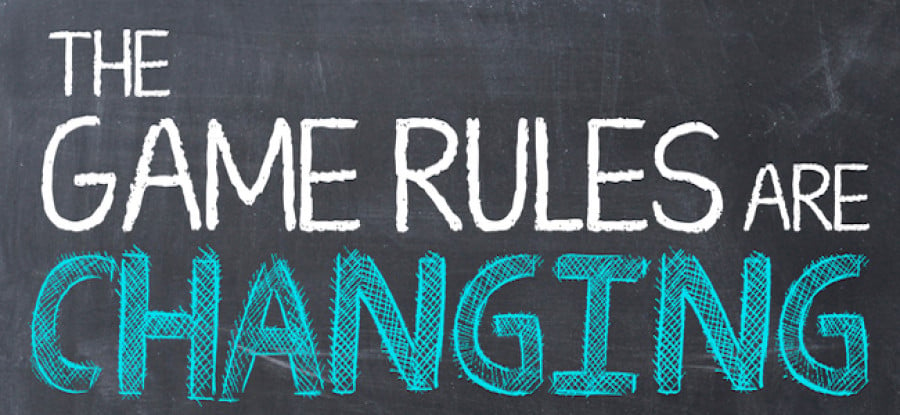The future of sports governance: Will sport sustain its traditional model of autonomy?

Since the 19th century, many sports have been run on a self-regulating model, anchored in their origins as amateur pastimes. But modern sports are often multi-billion pound ventures, with global audiences and customers – invaluable commodities to be traded and marketed.
Professionalisation can have major benefits: wage increases, unionisation and worker protection, injection of investment for facilities as well as education, safety precautions and the raising of performance standards. However, it also brings with it the risk that finance becomes the tail that wags the dog (in this case what are often referred to as “sporting values” or the “spirit of the sport”).
Faced with the maturing of the sports industry, the capacity of traditional governance models to deal with contemporary issues is under the spotlight, raising the fundamental question: is the current structure of sports governance working? And the related questions, raised by many fans and casual sports observers: what role (if any) should governments be playing in sports governance? Is there something different about sport to other industries?
This article explains the “traditional model” of self-governance for sport and the recent high profile crises it has faced. It then examines the sustainability of the self-governance model against three essential issues:
- the independence of sporting associations from national regulation and/or government control/intervention;
- the significance of the political neutrality of sporting bodies; and
- the substantial financial dimensions of modern sport.
We will examine how each issue impacts sports governance and challenges the traditional model. We conclude by looking at how sports institutions need to reform if their traditional model of autonomy is to remain.
A traditional governance model faced with modern challenges
The traditional position of the sports world on the issues above is simple: governance is an internal matter, and external forces (namely governments) should stay out. In other words, this is an area where government intervention is heavily discouraged – sport should be kept for sports men and women and their legions of adoring fans. The conventional view of the governed and the governors is that sport regulation is a specialised, niche issue, which requires bespoke knowledge and experience. Further, it is said that the traditional model of self-governance allows for flexibility. For example, in response to recent challenges, a number of sporting bodies (such as the IOC) claim to have adopted corporate governance standards, which are said to meet any governance criticisms, while maintaining the independence of the sector.
However, this year has been particularly tumultuous for many sports’ governing bodies amid scandals, public scrutiny across the media, and fundamental challenges to their independence. In a recent article, Glenn Moore1 identified at least 5 major international federations facing what he calls “red cards” in terms of governance issues: the International Amateur Athletics Federation (“IAAF”), the International Olympic Committee (“IOC”), the Fédération Internationale de Football Association (“FIFA”), the Union Cycliste Internationale (“UCI”) and the International Tennis Federation (“ITF”). Other federations are not sheltered from the storm – for instance, shortly before the launch of the Rio Olympics the International Boxing Association (“AIBA”) faced allegations of match-fixing2.
Particular issues which have raised eyebrows in 2016 are doping, corruption and match-fixing. This summer, the IAAF declared that athletes from the Russian Athletics Federation would be ineligible from participating in the Rio Olympics3, following investigations into allegations of widespread doping at the the 2014 Sochi Olympic and Paralympic Games, potentially with the knowledge of the national anti-doping authorities. The decision was upheld by the Court of Arbitration for Sport on 21 July 20164. These findings were echoed in a report into the Sochi Games by Canadian Professor Richard H. McLaren for the World Anti-Doping Agency (“WADA”), which concluded that there had been a state-sponsored doping programme in Russia5. Just before the launch of this year’s Olympics, however, the IOC decided not to suspend all athletes selected by the Russian Federation for the Games, leaving the decision to suspend to individual sporting federations on a case-by-case basis after carrying out an analysis of each athlete’s anti-doping record. The IOC banned any Russian athletes with previous doping violations – even if they had served their periods of suspension6. Despite reports of potential challenges to WADA’s authority7, the IOC recently reaffirmed8 its commitment to invest in the independence and efficacy of WADA.
Earlier in the year, FIFA’s laundry was spread across the front pages of the world’s newspapers. Criminal investigations by US9 and Swiss authorities10 are ongoing, as well as investigations by its Ethics Committee into a number of other high-ranking officials, amid allegations of corruption, misplaced funds and a lack of accountability. UEFA’s former President, Michel Platini, had his suspension from football upheld by the Court of Arbitration of Sport (“CAS”), although reduced to 4 years11. FIFA’s former President, Sepp Blatter, has brought an appeal against a similar suspension, heard on August 25th 201612. Meanwhile, tennis has faced its most significant and public set of allegations of match-fixing13 (following the recent years of similar allegations in the cricketing context14), which are still under investigation. Cycling continues to deal with the fall-out from recent doping crises, and in 2016 encountered the first case of “motor doping”, i.e. the use of a mechanical aid concealed in a bike15. (For more on technological doping in sport, please see here and here16).
Sport and government intervention
To continue reading or watching login or register here
Already a member? Sign in
Get access to all of the expert analysis and commentary at LawInSport including articles, webinars, conference videos and podcast transcripts. Find out more here.
- Tags: Boxing India | Brazil | Code of Governance | FIFA | Gibraltar | Governance | India | International Association of Athletics Federations (IAAF) | International Boxing Association (AIBA) | International Olympic Committee (IOC) | International Tennis Federation (ITF) | Kosovo | Media and Sport (DCMS) | Nigeria | Olympic Charter | Olympic Games Rio de Janeiro 2016 | Paralympic Games | Regulation | Russia | Sochi 2014 | South Africa | Sport England | Switzerland | The FA | Treaty on the Functioning of the European Union (TFEU) | UK Sport | Union Cycliste Internationale (UCI) | United Kingdom (UK) | World Anti-Doping Agency (WADA)
Related Articles
- The journey of Gibraltar’s Football Association – Part 1: progress to UEFA & FIFA membership
- A legal analysis of FIFA’s governance reforms: do they meet the standards of best global practice?
- The future of the 'legal autonomy' of sport: Session 2 – political autonomy
- The future of the 'legal autonomy' of sport: Session 3 – legal autonomy

 Global Summit 2024
Global Summit 2024
shahnam jabbari
i am very glad that find this important source about sport law. i am student sport management (phd) and jurisconsult in sport. i like to study articles and theses about sport law.thank you very much.shahnam
reply